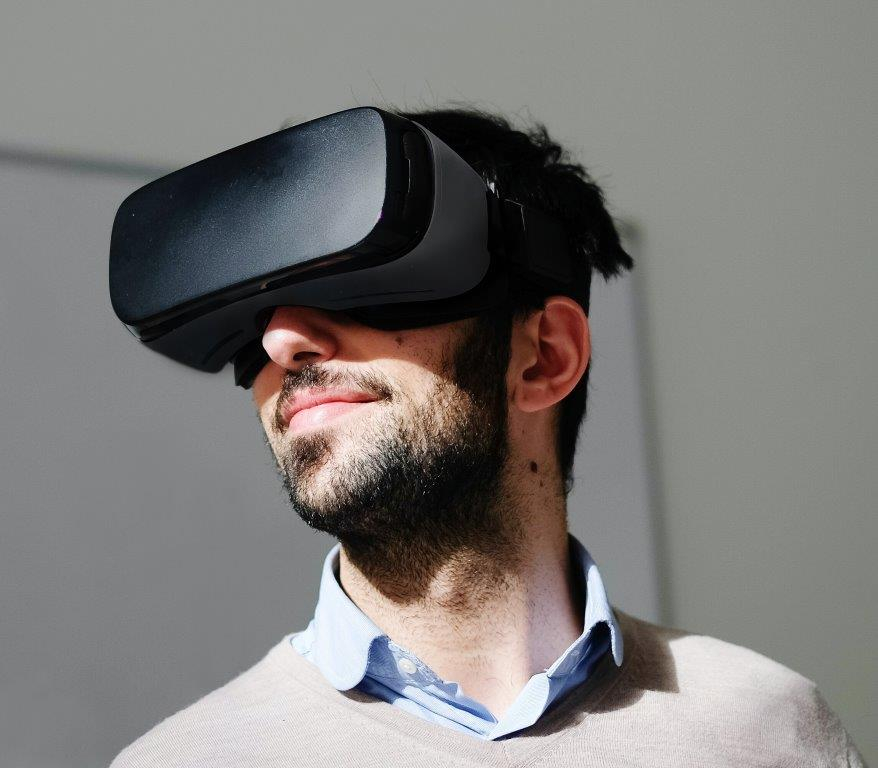How one manufacturer is leading the way in using modern technology to improve dementia-friendly design

Manufacturers and suppliers of products and services are recognising that people with dementia see their environment very differently to those without the condition.
And this is making way for a new generation of innovations that are helping to create more dementia-friendly buildings.
Tarkett’s specification tool
Flooring manufacturer, Tarkett, has launched a one-of-a-kind specification tool that helps architects achieve empathy-based design.
The company researched the impact of design on the wellbeing of elderly people, and published their findings in a White Paper.
The study led to the adoption of VR-EP – cutting-edge immersive software designed to help improve the lives of people living with dementia and recognised by leading experts in dementia design.
By using the world’s-only evidence-based dementia filter, users can now understand how the colour, contrast, texture and material of flooring types play a key role in overcoming anxiety and slips, trips and falls among residents by making spaces easier to navigate.
Breaking new ground
Taking into account 12 ‘dementia design principles’; the tool helps designers to visualise how dementia care facilities look to those using them, and how they could be improved.
Elizabeth Butcher, a flooring specialist at Tarkett, explains, “Understanding the problems posed by ageing, both for people with and without dementia, is vital to helping older people feel content and fulfilled in later life. As a company we have a special interest in dementia and how design can be used to benefit these people.
“This technology is 100% accurate and, for the first time, it allows for empathy-based design.”
Through a special headset, designers can immerse themselves in a care environment and see how colour, contrast, pattern and placement play a major role, checking for pattern suitability and creating environments that will help people with dementia.
Butcher explains: “VR is as close as you can get to seeing what people with dementia see. It takes out the guess work.
Contrast is king
It has long been recognised that contrast between different flooring types and other surfaces such as walls is far more critical than colour. Infact Butcher points out that “Colour is only registered by 40% of those with dementia - for them the world is 60 shades of grey!
LRV ratings
“When designing dementia-friendly flooring materials, we use LRV ratings. A rating of 0 is the blackest black, and 100 is the whitest white. And it’s the contrast between the two that matters most.
“For example, if one surface rating has an LVR of 20 and another has an LVR of 5, then the contrast rate is 15 - nice and simple.
We are not interested in the middle ground. 0-10 is no contrast. At 30-plus LRV the contrast is much higher.
“When we want people to move more independently, for example from a communal area to a corridor, or from a bedroom to an en-suite, then we want more contrast.”
Homely-looking dementia-friendly flooring ranges
Tarkett are also addressing the growing trend among interior designers for more homely-looking materials, with a number of wood-effect options.
“This VR tool has been demonstrated to thousands of people and has already been used to design a number of public and healthcare facilities,” said Butcher. “Good dementia design is not about making spaces look attractive. It’s about a reduction of anxiety. When we are anxious our walk pattern changes and we push our feet into the ground, which increases friction and, in turn, increases the risk of a fall. Dementia-friendly design is about minimising the chance of slips, trips and falls and enabling them to move freely from one space to another”.